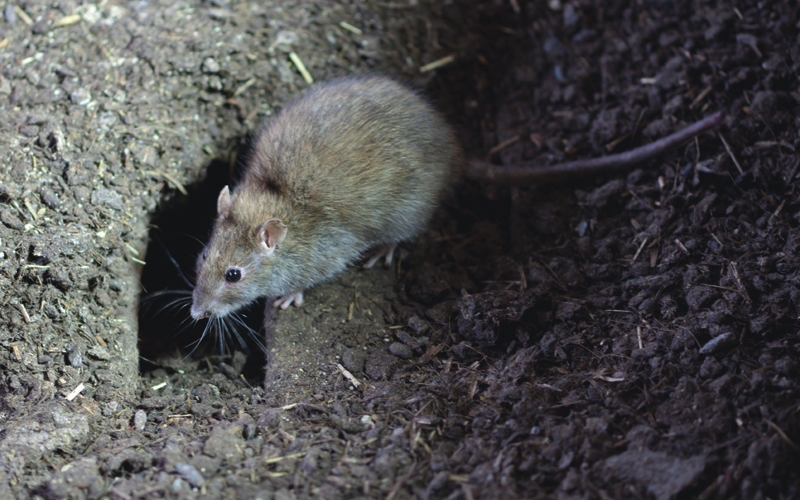Ask the Expert - Rodent control
Rodents are considered one of the most successful mammals due to their close association with humans and are now believed to outnumber them. Indeed they comprise over 305 of the total mammal biomass. They are fantastic for a host of physiological, toxicological, behavioural and other scientific research uses.

However, Rodents also compete for our food resources and pose considerable health risks. Food losses are massive both from direct consumption and contamination with droppings and urination.
Rodents destroy infrastructure by gnawing and damage everything from structures and wiring to data cables - even passenger jets have been grounded by rodents.
They are one of the most significant pests we face daily. Establishing procedures for dealing with rodents is critical to getting results that are acceptable to both clients and your business.
Pest Managers must ensure that programs do not impact off-target wildlife but remain completely effective in rodent management. Keep skills current in order to constantly improve services and ensure that the best possible outcome is delivered.
Keep skills current in order to constantly improve services and ensure that the best possible outcome is delivered.
Question 1
I am having trouble at a large commercial account with really poor bait uptake. I follow the same baiting program at other accounts with great success but this account has me stumped. What can I do to increase my success at this site?
Response:
Thanks Paul – great question.
Often we assume too much when we conduct rodent baiting programs. Humans have struggled for thousands of years to dominate this foe. Rats have not been this successful by being stupid and easy to control – far from it.
Not all rodents are the same – get to know your enemy
Rodents modify behaviours to fit their current environment. When food is freely available they can ignore new foods. Deny access to their regular food supply and they become food stressed, altering their behaviour.
A typical example is a rat population living around a school. Term time offers plenty of food but during the holidays, food suddenly dries up and rodents are forced to forage further afield. They readily take new food materials such as baits and you gain very rapid control.
If you can change their feeding pattern by reducing their access to a normal food supply, then you may be able to force them to change their behavior and feed on your baits.
Sometimes you have to think laterally
Once, I had a tricky job dealing with a large infestation of Roof Rats who were eating chocolates in a very large supermarket storage area. With hundreds of kilos of chocolate to feed on, rodent bait was completely ignored. Eventually, I solved the problem by taking a totally different approach.
Firstly, I modified the immediate environment to reduce as many available water sources as possible. At the time, it was very dry so water was scarce. I then added drink stations to all of my bait stations and gave the rodents a reason to investigate the changes. For 24 hours, the stations treated with suspicion but eventually, they moved in and consumed. Excellent control was achieved really quickly.
So while drink stations don’t solve all of the scenarios you face, sometimes it’s about taking a lateral approach. Rats are always suspicious but they are also extremely curious. Add something to your bait stations like paper or other nesting materials and they will inevitably investigate the changes.
Question 2
I run several rodent control accounts in very large food storage areas each set up to comply with HACCP regulations. Bait stations are placed at 3m intervals around the internal perimeter of the area and further stations are set up at the ends of the racking units. I get lots of rat droppings around and even on top of my stations but no bait is ever taken. What is going on?
Response:
Hi Mike - Thanks for the great question. This one is very interesting.
Looking for a Roof rat – Look up!
It sounds like you are dealing with an infestation of roof rats. My suggestion is to “look up”. Roof rats originate from the forests of SE Asia and are most comfortable nesting and foraging above ground.
In commercial food storage environments, roof rats nest in the upper areas, climbing down to available food sources and then back to the nest without touching ground level.
This is especially true if an infestation of Norway rats is present. Norway rats are aggressive meat eaters and love to feed on roof rats. As a survival mechanism, the smaller roof rat avoids areas where the Norway rat is established.
Target those hard to reach areas
Roof rats are natives of the arboreal jungles of SE Asia and highly adapted to seeking shelter in trees and other off-ground vegetation. Always inspect the perimeter areas of the building thoroughly for signs of harbourages and ensure they are removed to limit the nesting areas for roof rats. Ensure any vegetation that touches the building is trimmed well back from the structure to limit the access points for roof rats to enter a building.
Place bait stations in the areas where roof rats will forage- not just on the ground. We are all guilty of placing our bait stations in areas that are easy for us to check during our inspections but need to go the extra yard and set up the baits where it is best suited for Rodent control.
